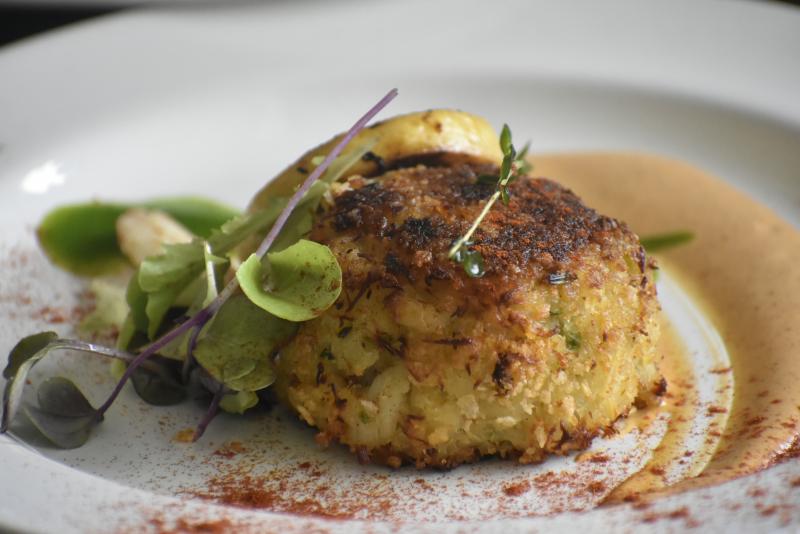Majestic sand dunes stretch out under the Milky Way. The 1,729-meter Mount Daisen, also known as Hokifuji, is enshrouded with old-growth forests. The Uradome Coast is like a museum of stark rocky outcrops sculpted over thousands of years by the Sea of Japan.

Tottori is one of the most nature-rich prefectures in Japan. Yet, as expected in a country lauded for its cuisine, the prefecture is also renowned for specialty ingredients and local dishes. Tottori, which is most famous for its sand dunes, is also known for snow crab.
Now that winter has arrived, gourmets can enjoy the winter-only seafood — Matsuba kani (crab), one of the top brands of snow crab. According to 2018 Ministry of Agriculture, Forestry and Fisheries research, Tottori ranked No. 1 in landing all kinds of crab, bringing in 37.3% (7,236 tons) of all crab in the country. This is almost double that of second-place Hokkaido, which brought in 20.2% (3,912 tons).
Of snow crab, those caught in the Sanin region, including Tottori Prefecture, are known as Matsuba kani. The crustaceans are regarded as one of the most sought-after winter seafoods for their sweet and succulent meat and limited fishing term (from early November to late March).
Eating crab has long been deeply rooted in Japanese food culture. Because it is not eaten all year round, however, crab is often reserved for special occasions, such as the New Year’s Day or celebrations. Crab also symbolizes good luck not only because its color (red is symbolic color of happiness in Japan), but also because crab lay many eggs at once, reminding people of having many children.

Tottori is the best place to enjoy Japan’s crab-eating culture through Matsuba kani. Its slender legs are filled with succulent meat and, after breaking the hard shell, one can enjoy the delicious flavor.
There are a wide variety of Matsuba crab dishes to be sampled. People can experience the fresh meat in sashimi, while crab hot pot the soup is steeped with heavenly essence. Boiled crab is also popular for the natural sweetness of the crab as well as crab miso, the innards of the crab. Grilled crab has an incredibly rich flavor unlike any other food.
Matsuba crab live in the cold and nutrient-rich environment around 300 meters below the Sea of Japan’s surface.
Tottori, which is literally translated as bird-taking, is so proud of its snow crab products that it promotes the idea of being called Kani-tori (kani-taking) Prefecture. Other than the large catches, Tottori people consume more crab than people from any other prefecture, and Tottori crab farms cover 11,000 hectares, also No. 1 in Japan.
Tottori created its own luxury brand of Matsuba crab called Itsukiboshi (five shining stars) in 2015.
To qualify for the Itsukiboshi brand, a Matsuba crab shell must be more than 13.5 centimeters in diameter, weigh more than 1.2 kilograms, have all 10 legs, be vivid in color and have succulent meat.
The qualification is so restricted that Itsukiboshi is rarely fished, accounting for only 0.01 to 0.03% of all Matsuba crab taken every year.
On Nov. 7 last year, a 14.6-centimeter, 1.24-kilogram Itsukiboshi went for ¥5 million at the first auction of the season. That set a new Guinness World Record for the most expensive crab sold at auction and broke Tottori’s previous record of ¥2 million, set in 2018.
Eating crab is not the only thing that attracts visitors to Tottori. In addition to the beautiful nature and stunning vistas, aged structures such as Sanbutsuji or Daisenji temples show the look of ancient Japan. People can relax at onsen (hot spring) resorts, and local sake is the perfect match for Tottori cuisine. The prefecture is like no other when it comes to enjoying sightseeing, food and culture at the same time.
Tottori is easily accessible from Japan’s major cities. It’s only 75 minutes from Tokyo’s Haneda Airport and a few hours by train from Osaka and Hiroshima. Matsuba crab can be enjoyed all over Tottori Prefecture.
Tottori’s gottsuo (meaning feast in Tottori dialect) can also be ordered from local stores. To order, please visit: https://www.47club.jp/event/webkani/
Also please visit https://www.kanitoriken.jp/ for more information on Tottori’s Matsuba crab campaign, and https://www.tottori-tour.jp/en/ for Tottori’s tour information.
The Link LonkDecember 17, 2020 at 09:55AM
https://ift.tt/3p38Rke
Divine crab cuisine, scenic vistas, ancient heritage await - The Japan Times
https://ift.tt/2MkGRbk
Crab

No comments:
Post a Comment